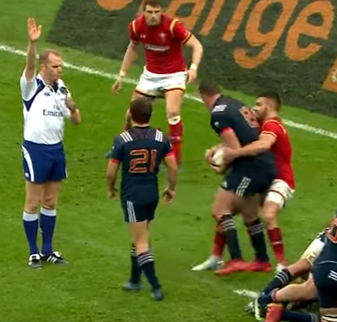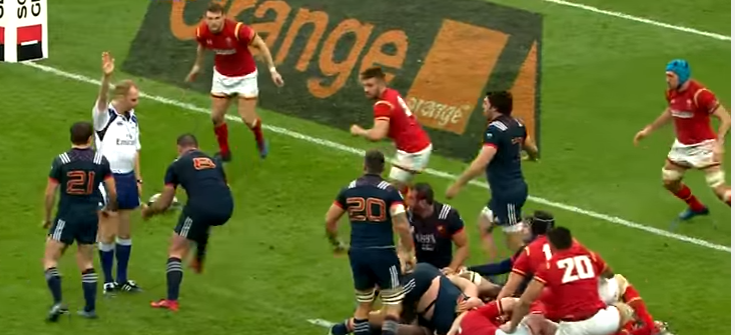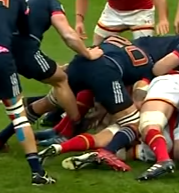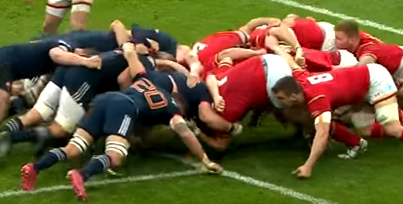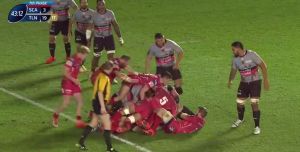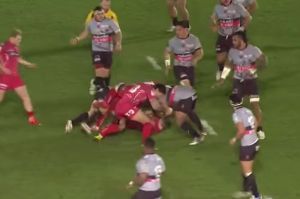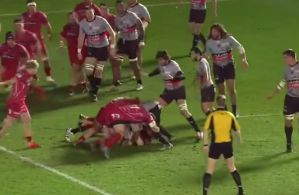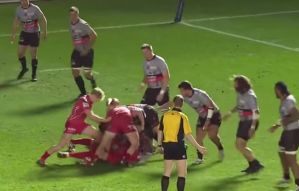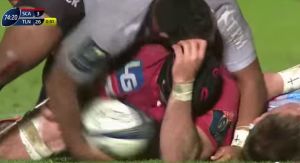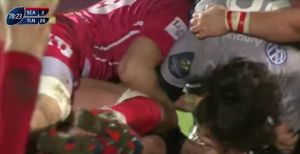Here are two virtually identical clips from the opening weekend’s action in the 6 Nations. Both incidents resulted in the referee blowing his whistle for a penalty but can you guess which side was penalised?
Clip 1: Wales v Scotland
One of the penalties Barclay gave away at the tackle against Wales. pic.twitter.com/g4Jz6jY0Mc
— rugby (@theblitzdefence) 5 February 2018
Clip 2: France v Ireland
Stander wins a penalty for Ireland at the breakdown. pic.twitter.com/czCRI6rdLZ
— rugby (@theblitzdefence) 5 February 2018
In both examples the tackler is brought to ground and the first man in (Stander in the Ireland game and Barclay for Scotland) spiders on to his hands and then attacks the ball.
Barclay was penalised by referee Pascal Gauzere with Leigh Halfpenny kicking the 3 point penalty, while CJ Stander won the penalty from Nigel Owens as he adjudged the French carrier was holding on.
The question therefore is how can two of the best referees in the world come to different conclusions from what is effectively the same infringement?
There are a couple of possible explanations.
(1) The referees don’t see what we can see through the TV footage
As TV viewers, we can sometimes be at an advantage over referees in that our angle of viewing may provide a clearer picture of what is going on. The TV cameras are fairly high and we often don’t have to look through players to see what is going on.
If we look at the Barclay penalty we can see Gauzere’s legs come in to shot at the top of the picture as he moves towards the Welsh side of tackle. He has a good view of Barclay’s hand positions from a slight angle to the ruck.
In the Stander example we can just see Owen’s white boots on the edge of the picture, which shows he is on the French side of the ruck and perhaps has his view of Stander obscured by the other bodies on the floor.
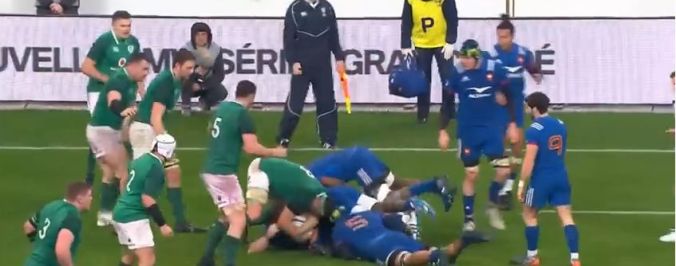
By the time he runs around to this side of the ruck he has missed the initial hands on the floor and sees Stander with his hands on the ball (albeit still not supporting his body weight).
If there is one criticism to make of Owens in this position is that he doesn’t use Stander’s body position as an indicator that he isn’t supporting his own body weight. Try copying Standers body position in the image above, with your head about 10 inches off the floor a metre in front of your feet. It’s impossible.
(2) The referees see what we see but do not view the incident in the same way
In this permutation the referees clearly see what we see, but their view on whether this is an infringement or not differs. There are lots of examples of referees at the top level allowing players to flop off their feet over the ball, even when they have a clear view.
This image is from the recent Racing92 v Munster game. Andrew Conway makes a half break and just look at the body position the Racing92 jackal makes.
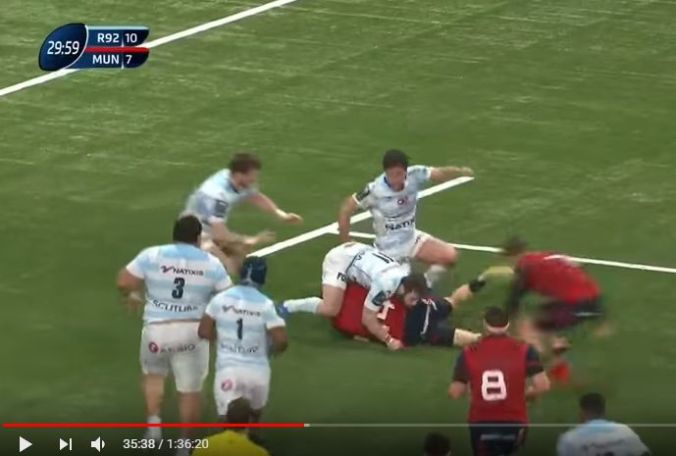
The referee (yellow shirt at the bottom of the screen) has a great view of the incident but allows it.
Why the referee would allow it is the million dollar question. When the Stander incident was posted on Twitter some people commented that it was down to the referee’s interpretation.
There are two aspects to the concept of “interpretation”. What it shouldn’t mean is that referees are free to decide how the laws are written and how they should be applied; the laws around the jackal supporting weight at the breakdown are clear – there is no room for “interpretation”.
The second definition of interpretation is that referees will come to different conclusions where they are being asked to make a judgement (often in a split second). In this example, it would mean there are referees who would have a different judgement on whether a jackal was supporting his body weight.
This second definition of “interpretation” is valid but in the examples already mentioned above it is clear that the jackal is off his feet. This isn’t a matter for interpretation.
Does it matter?
If your view is that ultimately rugby is entertainment, then the answer is probably no, it doesn’t matter. These sorts of technical issues are irrelevant to building up an audience and ensuring rugby thrives.
The contrary view is that rugby is now a professional sport with livelihoods at stake. In a game as close as the France-Ireland one, a penalty can be the difference between a team winning and losing.
We therefore need to make sure these decisions are accurate and consistent. To achieve this we probably need to give more help to referees at the professional level.
To follow theblitzdefence on Facebook follow us here.

